EV Adoption Will Lower Costs—But Not for All
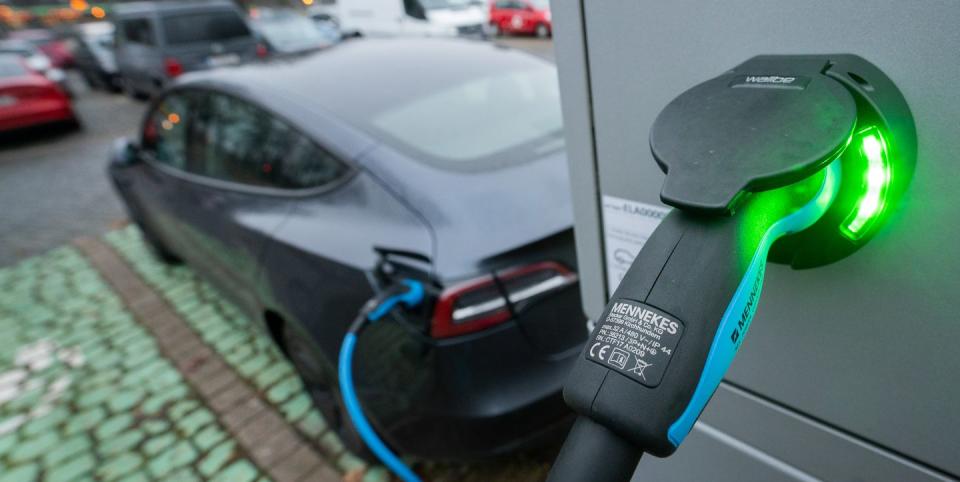
Battery-electric vehicles make up around 1% of all vehicles on American roads today, and researchers say the continued adoption of EVs is good news for the planet and our pockets.
Researchers at the University of Michigan put this adoption theory to the test on a grand scale, measuring how much money consumers would save and how much emissions would be reduced by a mass EV adoption.
The results showed that certain geographic locations and high-income individuals would benefit greatly from mass EV adoption, while low-income populations and more rural parts of the country would incur higher costs and limited emissions reduction.
Battery-electric vehicles are here, whether you like them or not, and scientists continue to say electrification is the best way forward to reduce greenhouse gas emissions. A recent study on EV energy costs from researchers at the University of Michigan joins the ranks of studies confirming this stance, but the findings also showed the cost of living effect from EV adoption isn't so clear cut. In fact, the study found that geographic location and socio-economic status will have a prevailing effect on the barriers to affordable EV adoption.
But what exactly does that mean? To understand the study's findings, it's important to know how it was conducted and what the researchers wanted to learn. The primary research questions were focused on the extent new battery EVs and combustion vehicles reduce current transportation energy costs and how these costs vary by income group. Additionally, the team wanted to know where and to what extent BEVs were able to reduce transportation energy costs and lower greenhouse gas emissions.
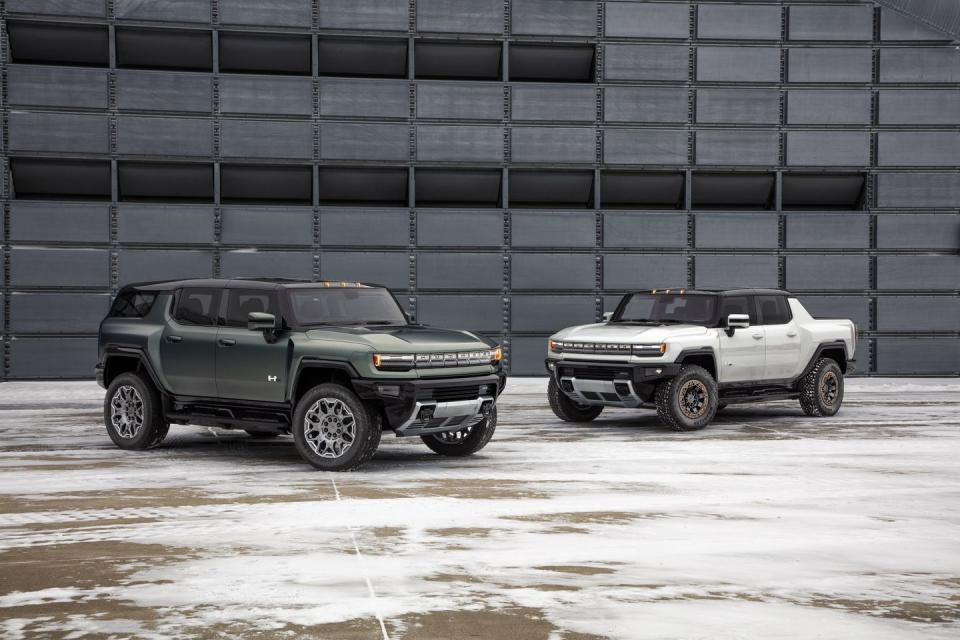
To do so, they calculated census tract transportation energy burdens (fuel or charging costs) and lifecycle GHG emissions (grams of CO2 per mile) of new EV and ICE models, in addition to comparing these new models to a grouping of currently road-going vehicles. This data was simultaneously placed under a geographical lens across the country, making for unique data depending on the region.
Other important terms to remember include "energy burden savings," which refers to the difference between internal-combustion and BEV energy costs, and "GHG savings," defined as emissions reductions from EV adoption.
Finally, to accurately account for a multitude of geographies and income levels, the research team consulted the US Department of Energy's Low-Income Energy Affordability Data Tool.
Due to the sprawling nature of the study, the results varied greatly depending on region, income level, and vehicle type. But the current baseline energy burden that Americans nationwide face leaves much room for improvement. In fact, as compared to the moderate energy costs that most Americans deal with, 71% of US households would see their transportation-related energy costs cut in half if they switched to a new BEV, according to projected models.
This same model shows an average fuel cost reduction of 55% across the country with new EV models, while a switch to newer, cleaner ICE models would result in an average fuel cost savings of 27% less than current averages.
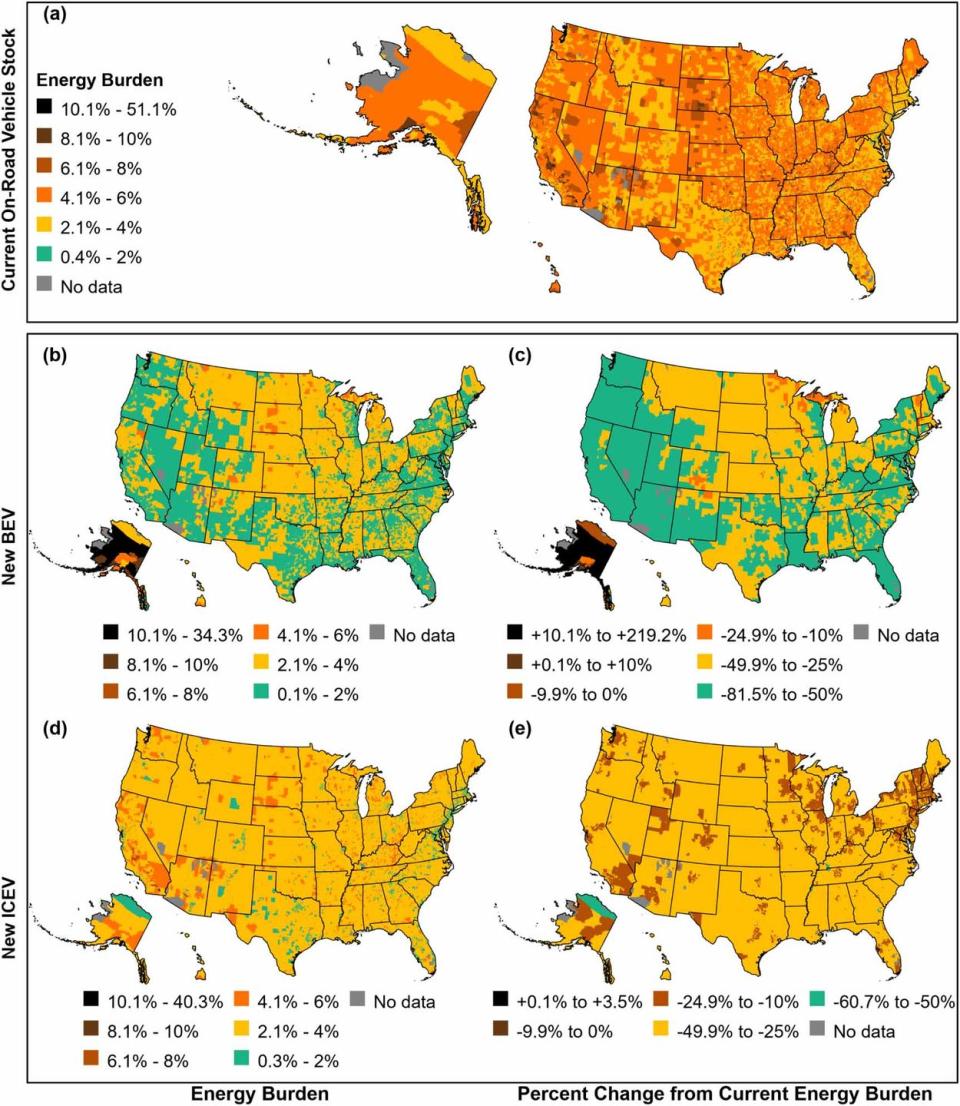
Adopting a BEV in the South or on the West Coast will net the greatest fuel cost savings, ranging from 50%-81%, while a small population of the country (0.1%) in remote regions of Alaska, Maine, Michigan, Rhode Island, and Massachusetts would see increases in energy costs by adopting a BEV.
Areas with significant reductions in energy costs through EV adoption are those with a levelized cost of charging or those with limited seasonal effects on charging or fuel costs. Energy costs in the Midwest and Rocky Mountain states would be reduced marginally with mass BEV or new ICE vehicle adoption, though BEV adoption would ultimately be more cost-effective in both regions.
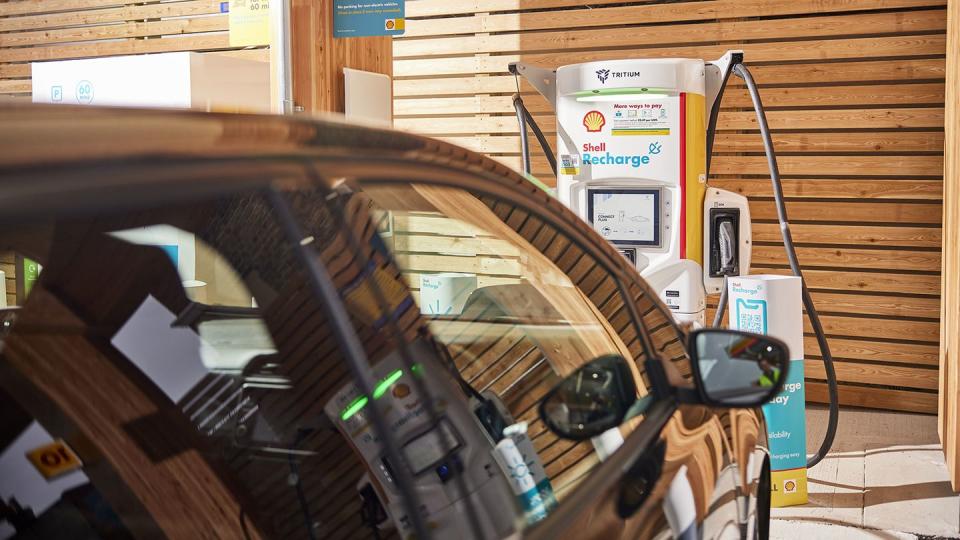
Taking income level into account, however, shakes up the positive effect that EV adoption is set to have. While around 33% of US households currently have low transportation energy costs, a majority of the country faces moderate to high transportation energy costs at this time. Adopting BEVs would actually reduce costs for those making anywhere from 200% of the area median income to as low as 30% of the area median income.
Unfortunately, as modeled by this study, EV adoption would either significantly raise or even out already high energy costs for those making less than 30% of the regional median income across the country. The highest energy cost burdens from BEV adoption would be found in low-income communities in Alaska, Hawaii, and the Midwest, where households would need to devote anywhere from 10% to 64% of annual income to energy costs. Both Hawaii and Alaska are notable for having the highest electricity costs in the country. In total, those low-income communities potentially affected by BEV adoption are split into 22% urban and 78% rural.
The study goes on to say that charging access and de-carbonized electricity are key players in the effort for both affordable and clean EV charging. To this effect, a true reduction of GHG emissions hinges on a clean power grid, something that many US states don't currently have.
According to these models, 91% of households would see some level of GHG and energy burden savings in a mass switch to BEVs, with 27% of US households set to enjoy both moderate GHG savings and energy burden savings. Another 8% of households, spread across the Pacific West, Arizona, and New York, would reap high energy burden savings and GHG emissions reduction thanks to milder temperatures, lower electricity prices, and low carbon intensity power grids.
The remaining 65% of the country would exhibit low potential for either or both cost savings and emissions reductions. "For one or both factors, there are areas where BEVs and (combustion vehicles) perform similarly (i.e. savings are close to zero) 2 and where BEVs definitively perform worse," the study says. "However, less than 1.3% of households fall into each of these categories." Generally, these swaths of the country incur such results due to extremely cold temperatures, higher electricity prices, moderate to high carbon-intensity power grids, and lower vehicle miles traveled each year.
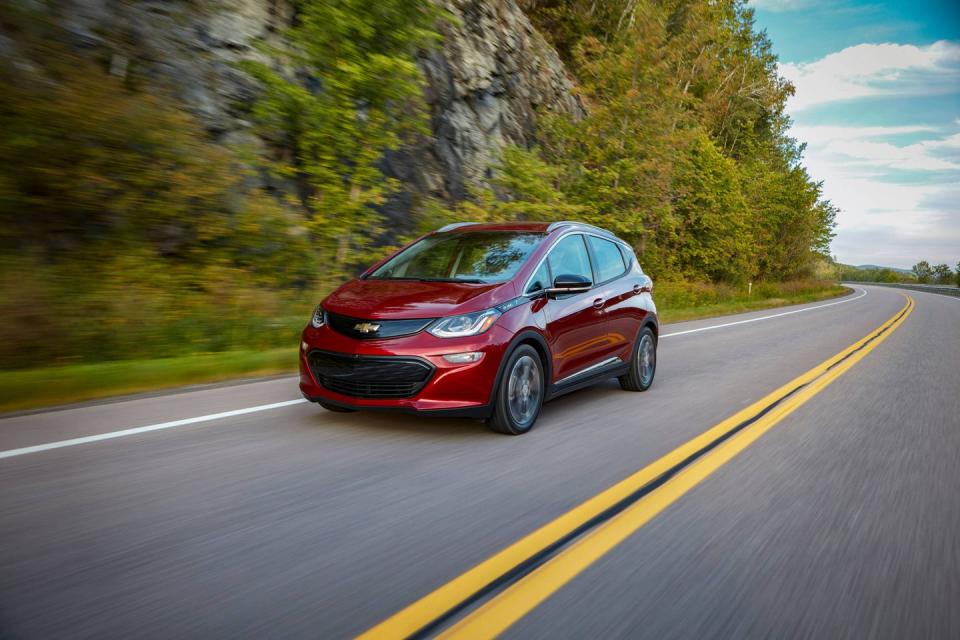
Using these findings, the research team encourages the move toward BEV adoption, but says regional and local approaches to lowering costs for low-income areas and communities will be essential for an accessible rollout.
Additionally, the need to decarbonize power grids around the country persists. Some 22% of high BEV energy costs are found in urban areas, where other forms of cheaper and more efficient transportation are typically available. For the remaining rural areas with a high energy cost burden, reducing the cost of electricity should be the primary goal.
Finally, the research team acknowledged this study doesn't account for the upfront cost of BEVs, which remain prohibitively expensive save for a few specific models. While the federal Inflation Reduction Act is set to help lower costs, there are very few EVs available for purchase below $30,000. Going forward, integrating EVs into the broader population equitably and cost efficiently will be a challenge, but research continues to show that the results of mass EV adoption will favor our collective future.
Would you consider buying an EV only if it was guaranteed to lower your energy costs? Please share your thoughts below.

 Yahoo Autos
Yahoo Autos 